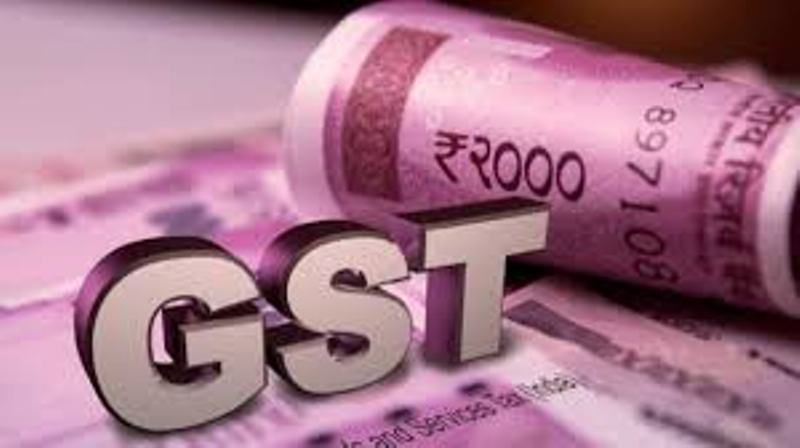India’s Goods and Services Tax (GST), introduced on July 1, 2017, was envisioned as a revolutionary step to simplify the nation’s complex tax system, expand the tax base, and promote a unified market. While the reform streamlined indirect taxation, it has also exposed stark disparities within the economy. For Micro, Small and Medium Enterprises (MSMEs) and the growing gig workforce, GST has been both a boon and a bane—bringing them into the formal tax net but also imposing heavy compliance and administrative burdens. More crucially, the regressive nature of indirect taxation has widened the gap between the rich and the poor.
The recent reduction of GST rates, though applauded by industry and consumers alike, fails to address this structural imbalance. A rich industrialist and a daily wage earner now pay the same GST on basic goods, violating the core principle of equity. To realize the dream of an inclusive India, it is time to think beyond uniform taxes and move toward progressive systems that can truly redistribute wealth and opportunity.
In its present form, India’s GST disproportionately affects the poor. Reports indicate that the bottom 50% of Indians contribute nearly two-thirds of total GST revenue, while the top 10% contribute barely 4%. This happens because the poor spend a larger share of their income on consumption—especially on goods that attract taxes—while the rich save or invest much of theirs. The result is an inverted pyramid of contribution and benefit, where those with the least means shoulder the greatest load.
The MSMEs, which form the backbone of India’s employment and production, continue to suffer under GST’s weight. Complex return filing, high compliance costs, and delayed input tax credit refunds have throttled working capital and slowed growth. For gig workers and small service providers, the lowered exemption threshold has drawn them into the tax net prematurely, increasing their operating costs without corresponding social security benefits. While technology has improved efficiency, the administrative maze remains daunting for small entrepreneurs with limited resources or literacy in digital systems.
Globally, progressive taxation has emerged as a tried and tested remedy for inequality. The Nordic countries—Sweden, Norway, Denmark, and Finland—stand out as exemplary models. Their tax systems are designed around high marginal income tax rates (often exceeding 50%) coupled with comprehensive social benefits. Strong labour unions and collective bargaining further compress wage differentials, ensuring equitable growth. The outcome is evident: these nations boast among the world’s lowest Gini coefficients and highest standards of living. Importantly, public trust in governance has remained high because citizens clearly see the return on their taxes in the form of universal healthcare, education, and welfare.
Another instructive case is Spain’s Wealth Tax, introduced in 2023 as a “Temporary Solidarity Tax on Large Fortunes.” Applied progressively on individuals with net wealth above specific thresholds—ranging from 1.7% to 3.5%—it has generated substantial revenue with minimal capital flight. Studies across the European Union reveal that such wealth taxes could yield up to 1.3% of the region’s GDP annually. Contrary to popular fears, the experience of Norway and Switzerland shows that only a minuscule fraction of wealthy citizens relocate in response to wealth taxation. This demonstrates that well-designed, transparent, and equitable tax policies can raise significant public revenue without stifling economic dynamism.
For India, however, implementing such reforms is a formidable challenge. The country’s federal and pluralistic structure, with 28 states and 8 Union Territories, makes consensus on tax policy both politically sensitive and administratively complex. The GST Council’s consensus-based decision-making process, while democratic, often leads to compromises that dilute the intended progressivity. Moreover, the sheer size of India’s informal economy, which accounts for nearly half of total employment, makes it difficult to track income or wealth accurately. High-net-worth individuals often exploit legal loopholes, exemptions, or offshore routes to minimize their tax liabilities. Weak enforcement capacity and a shortage of skilled tax officers further compound the challenge.
To overcome these barriers, India needs a multi-tiered reform strategy. In the short term, the GST structure can be recalibrated to differentiate between essentials and luxuries. Basic food, healthcare, and education services could be zero-rated, while non-essential, high-value items—such as luxury cars, jewellery, and private jets—could attract higher GST slabs or surcharges. Direct compensation mechanisms such as cash transfers can be introduced for lower-income households to offset the regressive impact of GST on their consumption patterns.
In the medium term, India must strengthen direct taxation mechanisms. Progressive income tax reforms, wealth taxes on the top 0.5% of wealth holders, and improved property tax collections by states can substantially enhance revenue without hurting economic activity. Technology should be leveraged to close loopholes and improve compliance — through data integration between income, property, and expenditure databases. Expanding taxpayer education and simplifying return processes would encourage voluntary compliance while improving transparency.
In the long run, the vision must be a comprehensive redesign of the tax system—one that gradually shifts dependence from indirect to direct taxes. This should be accompanied by participatory budgeting, greater public disclosure of tax utilization, and institutionalized dialogue between government, businesses, and civil society. Only through democratic consensus can progressive taxation be legitimized in a society as diverse and complex as India.
Each stakeholder has a crucial role in this transformation. The Central Government must show political resolve to tax the wealthy more fairly, modernize the tax administration, and ensure that increased revenues are directed toward human development—education, healthcare, and digital inclusion. State Governments should build capacity in property taxation, support MSMEs through simplified procedures, and strengthen welfare schemes. The business community must recognize that equitable taxation ultimately sustains long-term consumer demand and social stability. Civil society and academia can help build public awareness, counter misinformation, and monitor accountability in tax administration. International organizations such as the OECD and IMF can provide technical support and benchmarking for reform implementation.
Global evidence confirms that progressive taxation works. In countries where such systems have been effectively implemented—like the Nordics, Spain, and Switzerland—inequality has fallen, social mobility has improved, and citizens’ trust in public institutions has risen. These systems have not dampened innovation or enterprise; instead, they have created societies where prosperity is shared and the social fabric remains strong.
For India, the path ahead will be challenging. It will require political courage, administrative reform, and broad-based public participation. Yet, the rewards are immense. A more equitable tax structure can fuel inclusive growth, reduce poverty, and strengthen democracy. It can ensure that economic expansion translates into social advancement rather than deepening disparity.
As India aspires to become a developed nation by 2047, taxation must evolve from being a mere tool for revenue collection to becoming an instrument of social justice and national unity. The goal should be a fiscal system that uplifts the underprivileged while asking more of those with greater means—embodying the true spirit of participatory democracy and shared growth.
ALSO READ: Balancing on the Razor’s Edge: India at the Heart of West Asia’s Strategic Storm
Only then can India truly live up to the ideals of “Sabka Sath, Sabka Vikash”—where every citizen, regardless of wealth or privilege, marches together toward prosperity in a nation that is fair, inclusive, and strong.















